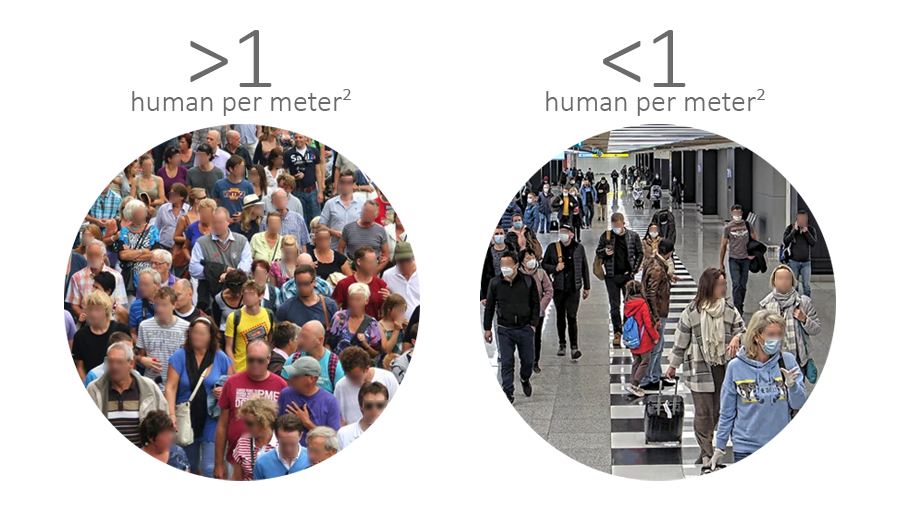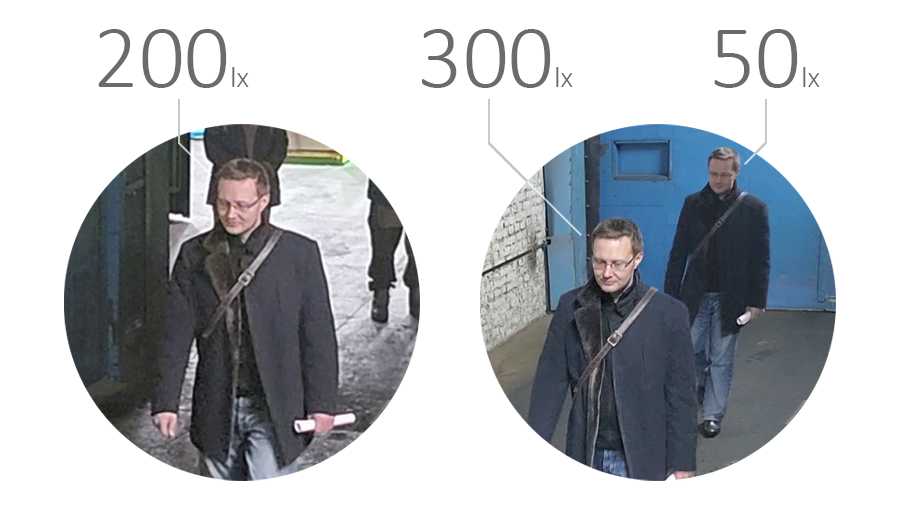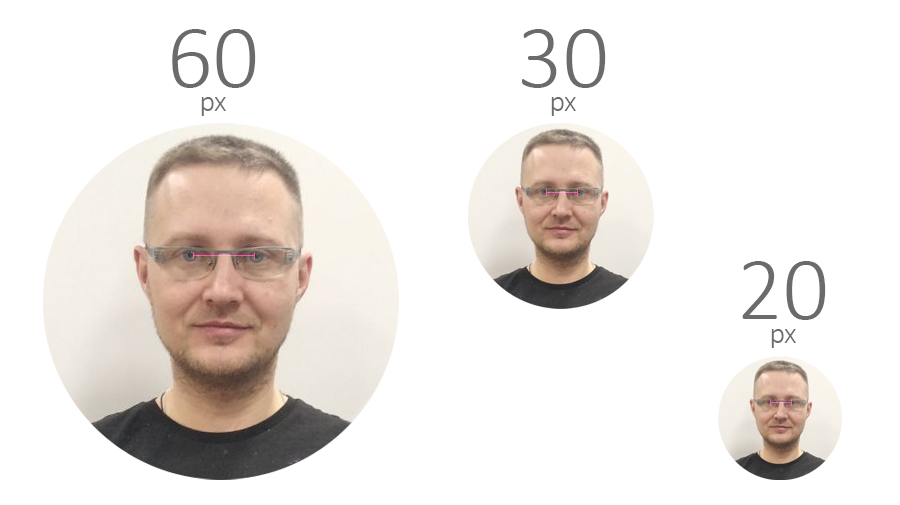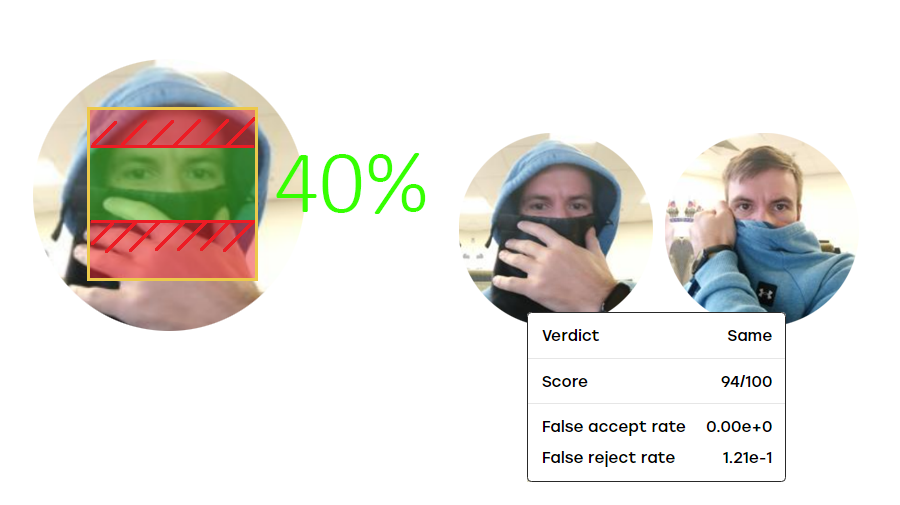Camera and image requirements
Video and camera
- Crowd density: maintain people flow density of less than 1 human per square meter.

- Movement speed: people should move at a maximum of 5 km/h, excluding running or using a scooter/bicycle, etc.

- Daylight illumination: video should not have direct glare, and the primary light source should be positioned behind the camera. The optimal illumination begins at 200 lux.

- We recommend using cameras with Full HD resolution (not 2K).

Ensure a frame rate of at least 15 frames per second (FPS).
Capture images at a resolution of at least 1.2 Mpx, ensuring a minimum height of 480 px.
For optimal face identification, position the camera at a height ranging from 1.5 to 3 meters above ground level.
For effective human action recognition (HAR), position the camera at a height between 2.5 and 4 meters above ground level.
Silhouette detection
- To ensure reliable silhouette detection, the person's height in the image should be a minimum of 200 px, allowing for clear and distinct visuals.

Persons should ideally not be occluded, ensuring a clear line of sight for comprehensive visual understanding.
The camera should be positioned to capture persons in a vertical orientation within the frame.
For effective human action recognition (such as fighting, falling, sitting/lying), limit the number of people in the frame to a maximum of 5.
Face detection
- The size of the face image should be more than 1/20 relative to the full frame from the camera.
- Image resolution: capture images at a resolution ensuring that, at the working distance from the camera, the distance between the centers of the eyes in a facial image is at least 20 px.

- Facial perspective: ensure that the angle and deviation of a person's face from the frontal position are within 20° vertically and 20° horizontally.

Maintain an evenness of face illumination of no more than 50%, ensuring consistent and balanced visual representation.
Acceptable occlusion: minor occlusion, such as the forehead up to the level of the eyebrows or the lower part of the face up to the tip of the nose, is acceptable, as long as recognizable facial features are retained and contrast is maintained with the background. Additionally, occlusion of the eyes with untinted glasses is also acceptable.

In cases of greater face occlusion, detection can still be performed. However, the quality of attribute assessment (e.g., gender, age) and face identification may not be fully guaranteed.
Face identification in video
Additional requirements further specify the requirements for face detection:
Capture images at a resolution ensuring that, at the working distance from the camera, the distance between the centers of the eyes in a facial image is at least 30 px.
For face identification quality assessment, the face should not be occluded by a combination of elements leading to over 40% face occlusion.
Profile images
When incorporating photo images of people into database profiles, ensure that:
The facial perspective, photography requirements, and image format adhere to the full frontal perspective as defined in GOST R ISO/IEC 19794-5-2013.
A distance between the centers of the eyes is at least 60 px.
Images are of jpg or png formats with a file size not exceeding 6 MB and each side of the image not exceeding 4032 px.